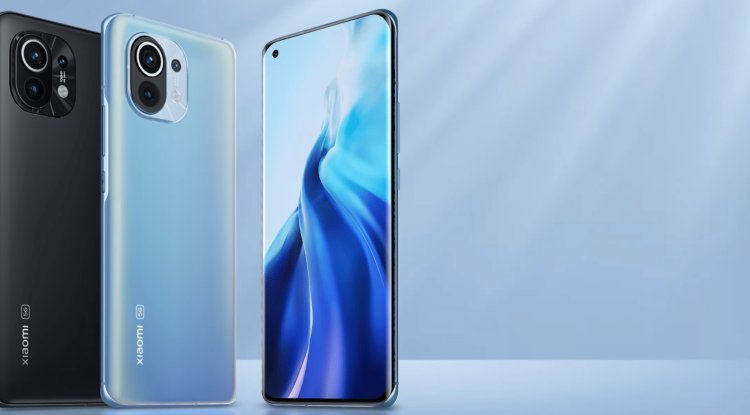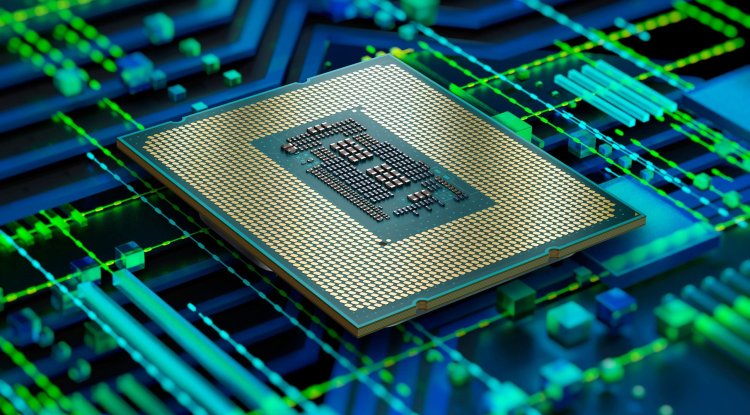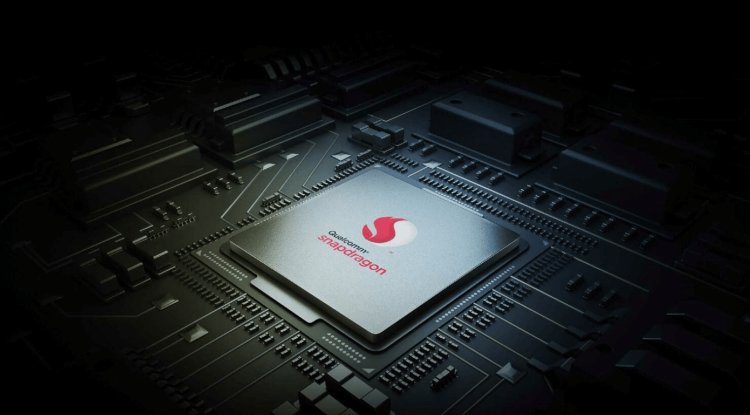Xiaomi Mi 11 Review: "Movie Magic"
Xiaomi Mi 11 comes mostly with 8GB of RAM and 256GB of UFS 3.1, and there is also an option with 12GB of RAM. Main camera: 108MP, 13MP and 5MP.

| Processor | |
| Frequency | 1x2.84 GHz Kryo 680 & 3x2.42 GHz Kryo 680 & 4x1.80 GHz Kryo 680 |
| Model | Qualcomm Snapdragon 888 |
| Memory | |
| RAM | 8/12 GB |
| ROM | 256 GB |
| SD card | Yes |
| Display | |
| Resolution | 1440x3200 |
| Screen size | 6.81" |
| Type | AMOLED |
| Protection | Corning Gorilla Glass Victus |
| Camera | |
| Selfie | 20MP f2.2 |
| Main | 108MP f1.9 + 13 MP f2.4 + 5MP f2.4 |
| Battery | |
| Battery | Li-Polymer 4600 mAh |
| Charging | Supports fast charging up to 55W (55W wired turbocharging / 50W wireless turbocharging / 10W reverse wireless charging) |
| Connection | |
| Network | GSM 850/900/1800/1900MHz; CDMA 800MHz; UMTS 800/850/900/1700/1900/2100MHz; LTE-FDD 700/800/850/900/1700/1800/1900/2100/2600MHz; LTE-TDD 1900/2000/2300/2500/2600 MHz; 5G-FDD 700/1800/2100/2500/3500/3700/4700 |
| WiFi | Wi-Fi 802.11 a/b/g/n/ac/6, dual-band, Wi-Fi Direct, hotspot |
| NFC | Yes |
| Bluetooth | 5.2 |
| GPS | A-GPS, GLONASS, BDS, QZSS, NavIC, GALILEO |
| USB | USB Type-C 2.0, USB On-The-Go |
| Software | |
| OS | Android 11, MIUI 12.5 |
| Audio | AAC/AAC+/AMR/AMR-NB/GSM-AMR, AMR-WB, apt-X/apt-X, aptX HD/apt-X HD/aptX Lossless, eAAC+, FLAC, MP3,WAV, LDAC,LHDC, aptX-Adaptive, PCM, AMR-NB |
| Video | MP4, M4V, MKV<WMV, WEBM, 3GP, 3G2, ASF |
| Dimensions | |
| Dimensions | 164.3 × 74.6 × 8.1 mm |
| Weight | 196 g |
| General | |
| Color | Horizon Blue, Cloud White, Midnight Gray, Special Edition Blue, Gold, Violet |
| SIM | Dual SIM (Nano-SIM, dual stand-by) |
| Original name | Xiaomi Mi 11 |
MI 11 DESIGN AND ERGONOMICS
What Xiaomi has absolutely hit the premium segment with the Mi 11 is the design and the impression this sleek phone leaves in your hand. The Mi 11 is made of a combination of a metal frame and curved glass at the back and front, which despite the large screen provides it with that one elegance, and at the same time comfort in the hand, which is honestly rare today.
The front is covered with new Gorilla Glass Victus glass under which is a 6.8” ultra-thin frame screen, with a small selfie camera hole in the upper left corner and a fingerprint reader, which will soon measure heart rate as well. Up along the very edge, there is such a thin slit of the speakers that it is practically invisible.
On the sides, the metal frame is in maximum condition, and it thickens on all four corners, at the top and bottom of the phone, where, among other things, it is completely flat. There is nothing on the left side, and on the right are the volume control buttons and the one to turn the device on/off.
One of the many advantages of this phone are the really great stereo speakers, behind which stands the audio giant Harman Kardon. One is at the top and the other at the bottom of the phone. Upstairs are a secondary microphone and an IR blaster with a universal remote control. At the bottom are that USB C speaker, main microphone and dual nano SIM card tray. So what is missing is a microSD card slot or a 3.5mm audio jack.
The back is covered with Gorilla Glass 6 glass, again so elegantly curved towards the metal frame. At the top right, attention is drawn to a rather large island in the shape of a square with rounded corners, and then an oval and four circles. There are three cameras and dual LED flash, and Xiaomi decided to impress with its large lenses and even the shiny ring around the main 108MP camera.
The glass on the back has that frosty matte look, so the fingerprints are not so noticeable. At least they’re not on this gray edition I got to rehearse. There is also an interesting shade of blue that shines in the light, and there are also models with fake skin on the back.
In hand, the Mi 11 is very comfortable and easy to handle despite the large screen. It is narrow, and tall, and not too heavy. So naked, like the larger glass metal phones, it’s slippery though less than I thought it would be. It is cool to get a thin but practical transparent silicone and antibacterial mask in the package, which will not make it very thick, and it will completely annul its slipperiness.
However, what it lacks for absolute equality with the competition in the premium segment is the IP waterproof certificate. At Xiaomi they say it is splash resistant, which means it should survive the rain but is not for immersion under water. It is possible that it is actually waterproof, but they did not want to pay for an IP certificate for it, as was the case with OnePlus until recently. MI 11 SCREEN
The Xiaomi Mi 11 is equipped with one of the most beautiful screens. It is a bright and extremely sharp OLED screen with a diagonal of 6.81″ in WQHD + resolution and with refreshment up to 120Hz. Stuffed to a maximum of 3200 x 1440 and 120Hz in all conditions, this screen looks fantastic.
Scrolling through content at 120Hz is extremely smooth, the display is sharp, and the colors and contrast are pronounced while watching it drito but also at an angle. The light intensity goes up to a maximum of 1500 nits and is sufficient for outdoor use on a sunny day. Back inside and when it gets dark it goes low enough not to fry your eyes.
Because the frame is so thin, the impression is that you only hold the screen in your hand, so that feeling of immersion in the content is guaranteed. The selfie camera hole is also one of the smaller ones, and the radius of curvature of the screen is optimal, so I don’t mind that either.
Of course, it also supports the Always ON notification display, but also handy tricks such as turning on by tapping and lifting in front of the face. Although the settings also mention turning off the screen by typing.
It is protected by the new Gorilla Glass Victus glass, and a protective foil is pre-applied on it. The fingerprint reader is located below the screen, it is optically and ergonomically well positioned, neither too low nor too high.
In short, all those awards given to him by Display Mate are not in vain. The screen is great, one of the best, absolutely comparable to the one on the Galaxy S21 series and is certainly one of the strongest assets of the Mi 11 phone. MI 11 CAMERA
Main camera 108MP is on the back, there is also a 13MP ultra wide and 5MP as they called it a telemacro camera. So what it lacks, even on paper, is a real telephoto camera, but how much you really miss it depends primarily on you as a user. For example, I don’t miss anything special.
I didn’t but someone outside opened the Mi 11 and peeked into his gut and discovered that there were no Sony sensors inside. The main 108MP is the Samsung ISOCELL Bright HMX sensor, which, by compressing 4 pixels into one, captures 27MP photos by default, and also records video up to 8K resolution. The lens has an aperture of f / 1.9 and is optically stabilized, and relies on PDAF for focus.
The ultra-wide 13MP camera has an OmniVision OV13B10 sensor, and this 5MP is again Samsung’s S5K5E9. At the front of the screen hole, the 20MP f / 2.2 camera is equipped with Samsung’s S5K3T2 sensor, has no autofocus and records video up to a maximum of 1080p 30fps.
Xiaomi is selling its Mi 11 under the slogan Movie Magic, referring to some special video recording modes, including a special Night Video, intended for shooting in low light conditions. Such videos generally offer better-lit shots with less common grain, but autofocus could be quieter here.
The camera interface does offer a handful of different shooting modes, but I guess you’ll mostly use the automatic, portrait and professional and possibly Night, although the need for it is less because the Mi 11 something like iPhone and the Galaxy S21 Ultra automatically turns on Night mode and extends exposure. PERFORMANCE AND BATTERY
Xiaomi hastened with the introduction of the Mi 11 phone with the intention of being the first to be powered by a Snapdragon 888 chip, and they succeeded. There is a lot of discussion on the internet about the temperatures and overheating of this chip under effort.
Since this is a rather elegant device with a metal frame, a certain warmth is felt under the fingers after about 20 or more minutes of demanding work. The Mi 11 comes mostly with 8GB of RAM and 256GB of UFS 3.1 data space, and there is also an option with 12GB of RAM. It does not support memory cards.
In addition to the standard Face Unlock, the Mi 11 also has an optical fingerprint reader below the screen. The quality of phone calls is excellent. The sound is clear and loud on both sides, and the proximity sensor that caused trouble on the Mi Note 10 Lite, for example, works perfectly here. There are no problems with GPS, Wi-Fi or Bluetooth, and it also supports 5G.
The charger and 55W charger in the package are lightning fast. It charges up to 83% on a 4600 mAh charger in half an hour, and it takes about 50 minutes to reach 100%. That’s really great. It also supports 50W wireless as well as 10W reversible charging of other devices on its back.





































